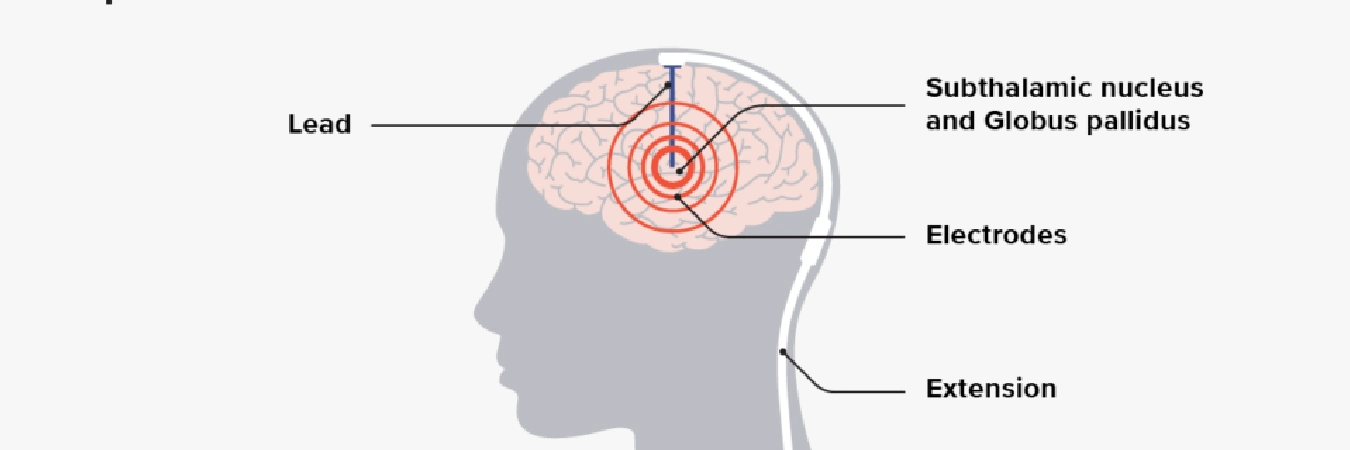DBS
How DBS Functions:
The movement-related symptoms seen in Parkinson's disease and other neurological conditions are a consequence of erratic electrical signals within the brain regions governing motion. Successful DBS aims to disrupt these irregular signals responsible for symptoms like tremors and other movement-related issues.
In a carefully planned procedure, neurosurgeons determine the ideal placement through a series of tests. They then implant one or more wires, known as "leads," deep within the brain. These leads are linked via insulated wire extensions to a compact neurostimulator, resembling a pacemaker, which is discreetly implanted under the collarbone. The neurostimulator emits continuous electric pulses through the leads, affecting the brain's electrical activity.
Long-Term Effects of DBS:
DBS surgery is instrumental in enhancing the quality of life for individuals with Parkinson's disease. It effectively alleviates symptoms such as tremors, stiffness, slowness, and dyskinesias. Furthermore, it can lead to a reduced reliance on medications for managing PD.
Studies tracking patients post-DBS reveal that many continue to experience sustained improvements in their symptoms for several years post-surgery. This progress empowers them to perform everyday activities like eating, using the bathroom, and self-feeding. In the context of movement disorders treated with DBS, individuals may or may not observe alterations in their memory, cognitive function, or mood as part of their overall experience.

